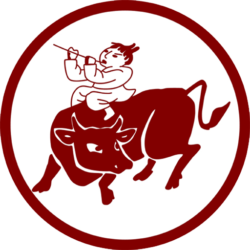In 2023 & 2024 we are doing something different with a five-day residential intensive and online masterclasses. See details
Module 1: Words and Hands
(or Physical Democracy)
How to teach a client to be an explorer
Aims
This module aims to show how to use a bodywork session to help a client in their personal development and to deal with chronic issues. A condition turns chronic when it becomes part of a person’s self-image and usually this means there is an unconscious resistance to change, which can interfere with the process of body- therapy. This means that the client has to become more active in the therapy to allow change to happen.
Movement Shiatsu includes breathing and movement experiments in the session that help the client to become aware of parts of themselves that are not integrated. They can then feed back to the practitioner exactly where they need support to make contact with that area. The session becomes a process of self-exploration as well as a treatment and the client is given practical tools for continuing the work on themselves into their everyday lives.
Learning Outcomes
The participant will:
1.1 Learn how to use language in a way that facilitates body awareness in the client
1.2 Understand how the person and the body can be seen as a community of autonomous agents
1.3 Learn how to use movement and voice to help different aspects of the body to ‘speak in the first person’ rather than be described by the verbal self.
1.4 Learn the difference between the left brain, right brain and enteric brain and learn how to help a client use all three forms of intelligence.
1.5 Explore how to integrate talking, dialogue and feedback with bodywork
The following describe learning how to work with a family of meridians which are related to movements through which an infant learns to sense and move their body. This family is particularly relevant to helping a client become aware of their body and to consciously experiment with their patterns. It consists of the Stomach and Large Intestine (YangMing) and the Spleen and Lung (Tai Yin) meridians.
1.6 Learn how the meridians of the YangMing and TaiYin are developed in childhood
1.7 Learn the forms of touch and relationship that facilitate the YangMing (Interactive Touch) and TaiYin (Front Door Touch)
1.8 Learn Inner Qigong exercises that develop the YangMing and TaiYin
1.9 Learn how to stimulate the parasympathetic nervous system
1.10 Learn to work with the developmental functions of the Stomach and Large Intestine to help a client discover what they need and to let go of what they don’t need.
These learning outcomes deal with the Experiential Anatomy associated with this family of meridians. Experiential Anatomy teaches one not only to know the particular anatomy but to sense those body parts, to learn to move them and to feel the contribution that body part gives to our energy and sense of self. These outcomes can partly be obtained from the online resources on Experiential Anatomy.
1.11 Learn to sense the internal organs and to feel the support they give to movement
1.12 Learn to facilitate a client to sense their own organs and to feel how the body can move to express the movement of the internal organs. (Organ Touch)
Module 2: Fascia, Body Memory and Trauma
Aims
This module aims to explore how the fascia and connective tissues give a sense of integrity both physically and emotionally. These tissues connect everything together and give a sense of elasticity and wholeness to the body. We will show how to contact the fascia through specific qualities of touch, how to feel and develop the elasticity of the fascia in oneself and how to use that sensation to find a sense of physical coordination and ease in movement.
Bill Palmer’s research with infant development has shown that the classical meridians show the way in which babies learn to move by connecting different areas of the body. As adults we find other ways of moving, particularly using spirals and movements that cross the midline. These pathways of connection are embodied in the muscles and fascia, forming ‘personal meridians’ different to the innate ones. The workshop will show how to work with these myo-fascial meridians and help clients to be aware of their unique way of moving and being.
Learning Outcomes
The participant will:
2.1 Learn to contact the different forms of fascia in the body and to recognise the difference between superficial fascia, muscle fascia, tendons, ligaments and periosteum
2.2 Learn to feel the elasticity of fascia within movement and to develop this elastic quality in muscles.
2.3 Understand the concept of Tensegrity and explore how the body can be held together and integrated through the elasticity of muscles and fascia rather than by muscular effort and control.
2.4 Understand how Tensegrity provides a flexible relationship between different parts of the body that allows every part to be engaged in every movement.
2.5 Feel how the ‘Inner Community’ finds harmony by being held together by mutual relationship rather than central control.
2.6 Understand the analogy between working with groups of people and working with the inner community and how Movement Shiatsu can be seen as group therapy for the body
The following describe learning how to work with a family of meridians that trace connections through which an infant learns to use the whole body in movement. This family is particularly relevant to helping a client become aware of their postural and movement patterns. The family of meridians consists of the Liver and Pericardium (JueYin) and the Gall Bladder and Triple Heater (ShaoYang) meridians.
2.7 Learn how the Jue Yin meridian guides the integration of the arms and legs into a central organising point in the solar plexus.
2.8 Learn how the Jue Yin is related to the development of core strength.
2.9 Learn how the Shao Yang meridian guides the development of rolling in infants.
2.10 Learn how to facilitate integrated movement through spiral movements at joints.
2.11 Learn techniques for releasing muscular control and facilitating ‘dialogue’ between body segments.
These learning outcomes deal with the Experiential Anatomy associated with this family of meridians.
2.12 Understand how muscles work, the stretch reflex and the concept of eccentric contraction (muscle elasticity).
2.13 Learn techniques to release muscle tension
2.14 Learn techniques to activate muscle tone and muscle elasticity
2.15 Learn to initiate movement from the antagonist muscles rather than the agonist and to feel how this involves the whole body in movement rather than just a local region. (Dancing Touch)
2.16 Learn to use this knowledge to practise the Inner Qigong spiral form.
2.17 Learn how to help clients to be aware of and value their unique way of being (Valuing Touch).
Module 3: Aligning Body and Mind
(or The Joy Divisions)
How to align motivation, intention and action
Aims
This module aims to deal with a central dilemma in human experience: how to find harmony between our inner impulses and the expectations of outer society. We aim to help participants to be aware of their authentic motivations and to be aware of how they sometimes inhibit these to conform to the expectations of other people.
The conflict between inner authenticity and outer conditioning is the cause of much suffering and the unconscious inhibition of core excitement causes many psychological and musculoskeletal problems.
The module aims to show how to work with movement, voice and bodywork to help people re-discover their core sense of aliveness. The course also aims to help people to be aware of how they unconsciously inhibit their authentic impulses. It will show how to work with internal conflict, both physical and emotional, and show how to transform it into clarity.
Learning Outcomes
The participant will:
3.1 Understand and experience the difference between conditioned motivation and spontaneous impulse.
3.2 Feel the effect of inhibition on the body structure
3.3 Learn to be aware of comfort zones and the fear of challenging habitual patterns
3.4 Use voice to open up buried parts of the personality
3.5 Use bodywork to release blocks to the expression of core energy
3.6 Learn to facilitate and practise authentic movement
3.7 Understand the difference between inhibition and choice.
The following describe learning how to work with a family of meridians related to movements through which an infant learns to act as an independent agent and to align intention and action. This family is particularly relevant to helping a client become aware of internal conflict. It consists of the Kidney and Heart (Shao Yin) and the Bladder and Small Intestine (Tai Yang) meridians.
3.8 Learn how to bring unconscious, internal body movements into awareness (Amplifying Touch)
3.9 Learn how the Bladder meridian coordinates muscles that align the skeleton so that force from the legs moves the body clearly in the intended direction.
3.10 Learn how this alignment affects different styles of crawling in infants and how this may effect the development of personality.
3.11 Learn how the Small Intestine meridian is related to the ability to reach.
3.12 Learn how muscles along the Small Intestine meridian perform the act of inhibition
3.13 Learn to work with the Tai Yang to align the body and mind in movement.
3.14 Learn the Inner Qigong of this family that develops awareness of inner impulse and practises alignment of intention and action.
These learning outcomes deal with the Experiential Anatomy associated with this family of meridians.
3.13 Learn to feel the different layers in bone (Bone Touch)
3.14 Learn to work with the skeleton to clarify muscular conflict and to align movement (Clarifying Touch)
3.15 Learn to work with ‘blockage areas’ in the skeleton such as the wrists and ankles.
3.16 Learn to release inhibitory muscle patterns and to help a client to adjust their posture.
3.17 Learn to work with joints so that the bones on either side of the joint move harmoniously together.
Online Learning Modules : Experiential Anatomy
Participants on the Certificate Programme will have access to the SEED online learning platform where they can self-study through guided videos, graphics and audio resources.
The online programmes include a detailed study of the skeleton and internal organs and include videos on how to experience, touch and work with these structures.
They also include a series of shorter videos for how to activate, experience and understand the action of different muscle groups.
Also all participants will have free access to videos that detail Qigong and Movement Shiatsu techniques taught in the face-to-face workshops.
Lastly, we provide a resource library containing articles and blog-writings by Bill Palmer.

